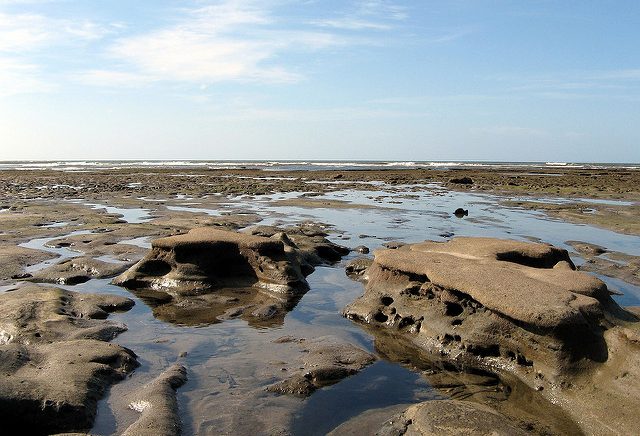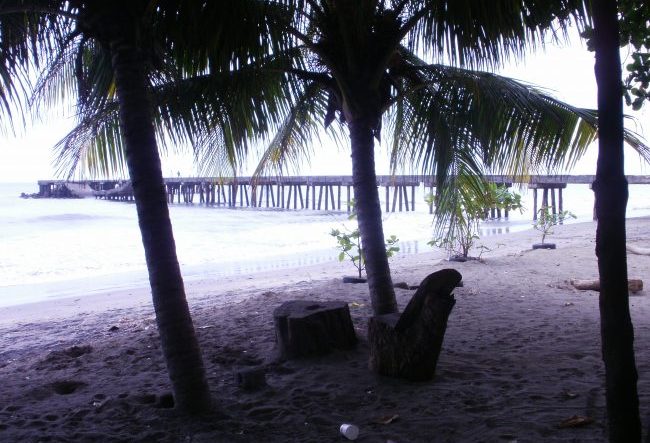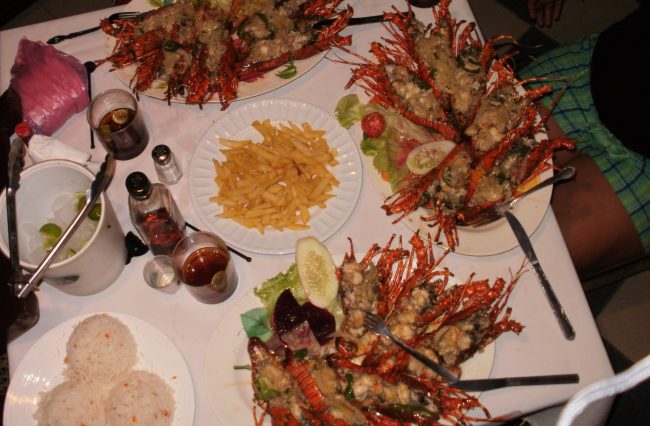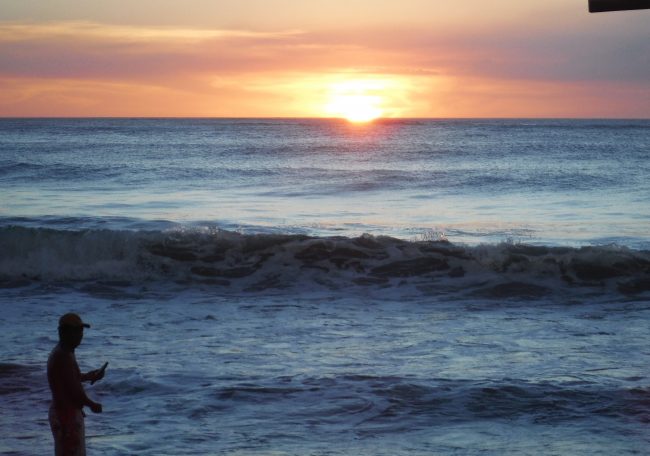
We are reader-supported and may earn a commission on purchases made through links in this article.
The day starts so clear and beautiful as I walk down to the beach. The tiki huts that serve as weekend bars are empty and the thatch from their roofs rustles over the sound of the surf. The sand is warm until the cool water of the Pacific rushes over my feet as I try to catch a sand dollar. Ahead of me are several dogs playing chase, and next to me are a flock of small white birds that occasionally fly around in a circle before landing again in the surf. As usual, I am the only person here, except for the occasional fisherman casting his net.
This quiet escape is Pochomil, Nicaragua. Look in a guidebook and you still will not know much about this hidden treasure of the Pacific Coast. It is not as well-known as a tourist destination as counterpart, San Juan Del Sur. Instead, it is the playground of the wealthy families of Nicaragua’s capital, Managua, but only on the weekends. The rest of the week it is a quiet retreat – just the sand dollars and birds.
I continue my walk along the coast watching the waves spray high into the air and stepping over the volcanic outcroppings that make small tidal pools for crabs and beautiful sunset pictures. I pass an old man on a horse-drawn cart who smiles and waves. That is the thing about this place, even being a tourist; everyone is friendly and wants to know more about me. I wish I had spent more time on my Spanish so I could actually have an adult conversation, but knowing that I will receive a smile works for now.
The bus costs less than 5 Cordoba, about 20 cents, to Masachapa, the neighboring town and where I am headed, but I always choose the walk along the beach for its ever-present beauty. As I pass the last bend, I see the lighthouse on the far side of Masachapa which actually serves as tsunami warning system, but is designed as a lighthouse. Between us are dozens of fishing boats, all painted in different bright colors dappling the beach pulled high away from the surf. In the evenings, you can watch as the men work to move them back down to the water on large wood logs so they can go out and catch the treasures of sea.
The restaurant up ahead is already hard at work and I can smell the garlic. Someone must have ordered fresh Pacific lobster caught this morning. I think about ordering as well. I know it would cost me less than $8 for a pound and a half of the freshest lobster, soaked in garlic and butter, with a side of rice and some plantains. It is tempting, but not before I do some shopping.
Masachapa is where you can find a lot of what you need for beach living. The small town is lined with small businesses. There is a veterinary store and clinic, a pulperia with sandwich meat and snacks, a cyber café, street vendors selling fresh mandarins and slices of mouth-watering watermelon, as well as a few restaurants and a bar for the late-night crowd.
For those not up for walking, the popular mode of transportation in town is young men riding bikes with seats in front for their passengers, the opposite of a rickshaw. They are abundant and a relaxing way to move around town. Several pass as I continue to walk, and they all have a smile for me. After I make my rounds and say “hola” to the people I recognize, I head back toward the beach to find some food.
With all the fishing here, the seafood is delectable. The restaurants all have fresh fish, shrimp, ceviche and of course, lobster. Since it is early in the da,y I decide on a bowl of ceviche and a cold Tona, the local beer, to wash it down. Sitting overlooking the water, I watch as a group of pelicans fly so close to the curling waves it looks as if they are surfing. I think about a swim.
This is life at the beach. Nothing moves very fast, the people are friendly and the seafood is excellent. I can see why the Somoza Family, the ruling dictatorship of Nicaragua for more than 40 years, chose this part of the country for their summer estate. Today you can still visit the estate as it has been transformed into the premier resort in Nicaragua, just up the street from Masachapa. I prefer the quiet sanctity of Masachapa and Pochomil, and head back toward my house to relax before heading to the beach bar by my house for my daily sunset Tona and fresh lobster if I am hungry.
Only an hour from Managua are Pochomil and Masachapa, two very different, yet similar towns offering the quiet relaxed pace that many are looking for. Be prepared to leave behind your late night parties, but not the comforts of home. There are at least a dozen vacation homes with every amenity you could want for monthly rental over-looking the ocean. Just don’t forget your suntan lotion.
If You Travel to Pochomil, Nicaragua:
Getting There:
From the Capital of Managua you have two basic choices to get to Pochomil and Masachapa. The quickest option is a taxi, although it may be difficult to find a local taxi willing to make the long drive. The rate should be around USD $50-60. Your second option is the local bus. The quickest bus is the UCA bus to El Cruzero, where you will change busses and go directly to Masachapa. Although faster, be prepared to stand after changing busses. If you want to sit the entire way, it is best to catch a bus from the main bus depot.
Further Information:
There is no local tourism department in Masachapa, but through sites such as VRBO.com and tripadvisor.com, it is possible to get some information on vacation rentals and available hotels, as well as local places to eat and drink.
Inspire your next adventure with our articles below:
Author Bio: Rebecca Teeters is a freelance writer currently living in Puerto Armuelles, Panama where she is working on her next novel. She has spent extensive time in Nicaragua and recently enjoyed driving from the United States to Panama with her dog, Jack.



